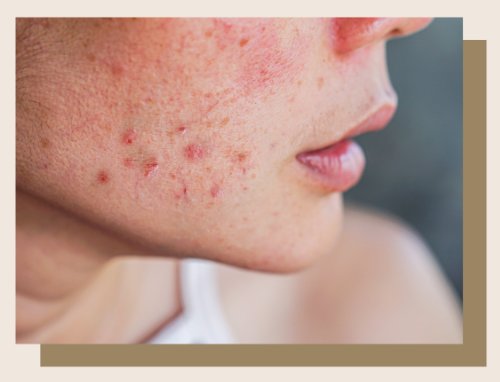Learn about
Acne
Acne is a common skin condition that occurs when hair follicles become clogged with oil and dead skin cells. It typically manifests as pimples, blackheads, whiteheads, or cysts on the face, neck, chest, back, and shoulders. Acne can affect people of all ages, but it is most common during adolescence and early adulthood due to hormonal changes.
There are several factors that contribute to the development of acne:
Excess Oil Production: Excess oil (sebum) production by the sebaceous glands is a primary factor. This excess oil can clog hair follicles and promote the growth of acne-causing bacteria.
Dead Skin Cells: Skin cells shed more rapidly during puberty, which can lead to a buildup of dead skin cells that contribute to clogged pores.
Bacteria: Certain bacteria are naturally present on the skin and can multiply rapidly in clogged pores, leading to inflammation and the formation of acne lesions.
Hormonal Changes: Hormonal fluctuations, such as those that occur during puberty, menstruation, pregnancy, and certain medical conditions, can stimulate the sebaceous glands and contribute to acne development.
Genetics: A family history of acne can increase the likelihood of developing the condition.
Acne can range from mild to severe and may present as:
Blackheads: Open comedones that appear black due to oxidation of the trapped sebum and dead skin cells.
Whiteheads: Closed comedones that appear as small, flesh-colored bumps.
Papules: Small, red, inflamed bumps.
Pustules: Red bumps with pus at the center.
Nodules: Large, painful, solid lesions beneath the surface of the skin.
Cysts: Deep, pus-filled lesions that are often painful and can cause scarring.
Treatment for acne depends on its severity and may include topical medications, oral medications, and lifestyle modifications. It's essential for individuals with acne to consult with a board-certified dermatologist to develop an appropriate treatment plan tailored to their specific needs.



